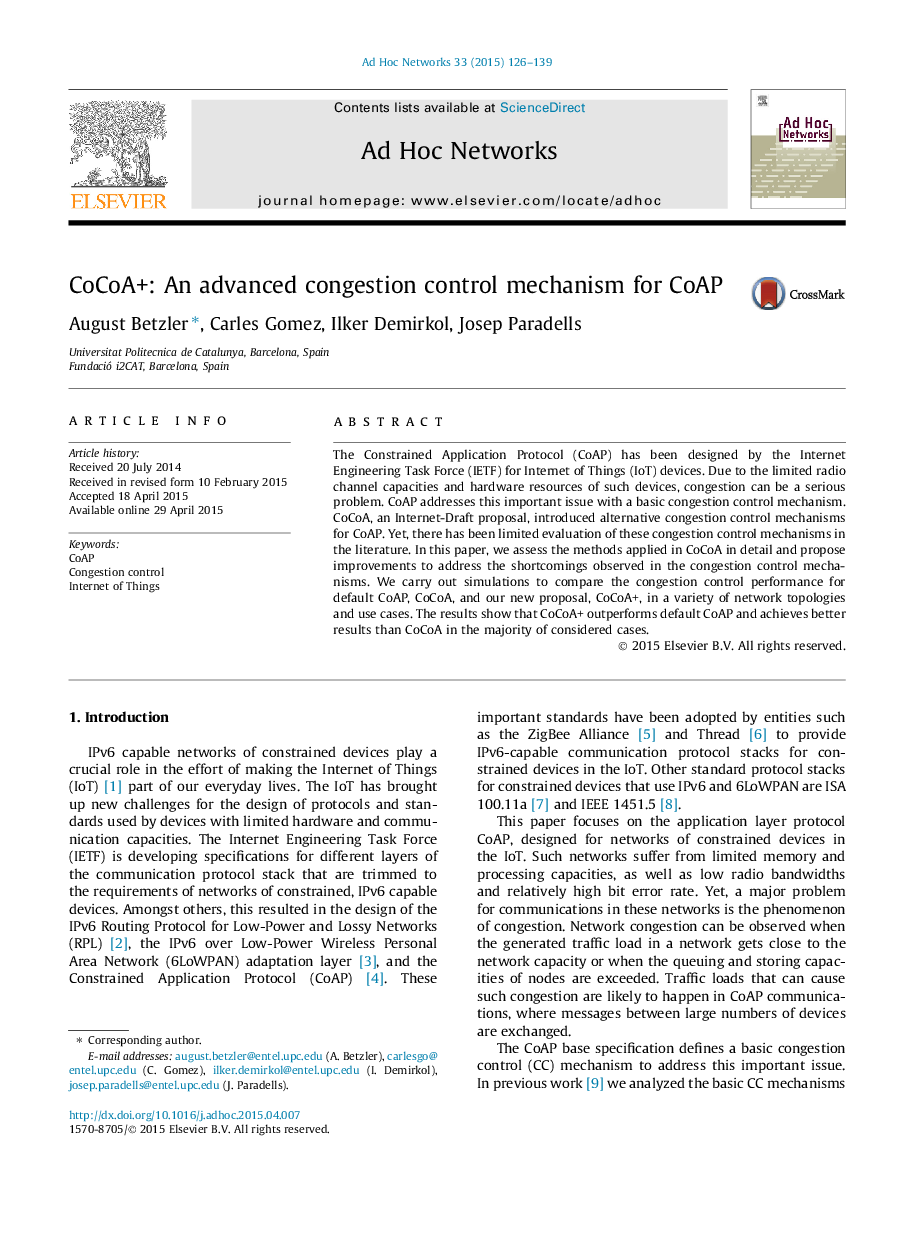| Article ID | Journal | Published Year | Pages | File Type |
|---|---|---|---|---|
| 444302 | Ad Hoc Networks | 2015 | 14 Pages |
The Constrained Application Protocol (CoAP) has been designed by the Internet Engineering Task Force (IETF) for Internet of Things (IoT) devices. Due to the limited radio channel capacities and hardware resources of such devices, congestion can be a serious problem. CoAP addresses this important issue with a basic congestion control mechanism. CoCoA, an Internet-Draft proposal, introduced alternative congestion control mechanisms for CoAP. Yet, there has been limited evaluation of these congestion control mechanisms in the literature. In this paper, we assess the methods applied in CoCoA in detail and propose improvements to address the shortcomings observed in the congestion control mechanisms. We carry out simulations to compare the congestion control performance for default CoAP, CoCoA, and our new proposal, CoCoA+, in a variety of network topologies and use cases. The results show that CoCoA+ outperforms default CoAP and achieves better results than CoCoA in the majority of considered cases.
